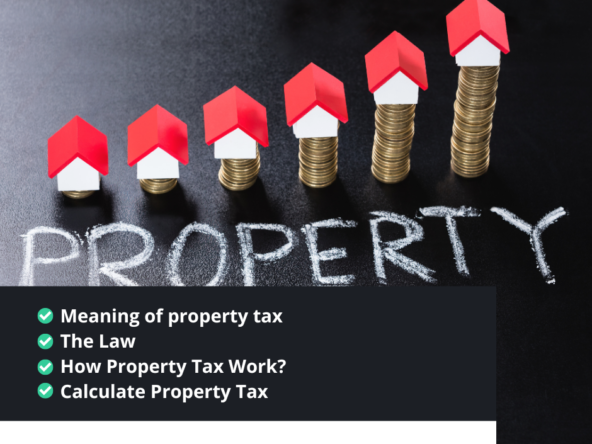What is flipping a property?
Property flipping is when a real estate investor buys property and then sells them for a profit. In order for a property to be considered a flip, it must be bought with the intention of quickly reselling. The time between the purchase and the sale often ranges from a couple months up to a year.
When it comes to property, it’s easy to see potential in just about anything. But whether it’s a dilapidated bungalow or rental property that needs much more than a simple lick of paint, there are numerous things to consider before purchasing a quick-flip property.
If you’re keen to purchase a flipper, you must go into it with your eyes wide open and be prepared to balance the property’s renovation potential with your budget constraints. The last thing you want is an unfinished renovation, a poor product or a sizeable debt at the end.
There are two different types of house flipping:
An investor buys a property that has potential to increase in value with the right repairs and updates. After completing the work, they make money from selling the home for a much higher price than what they purchased it for.
An investor buys a property in a market with rapidly rising home values. They make no updates, and after holding the property for a few months, they resell at a higher price and make a profit.
We’re mainly focusing on the first definition of house flipping and providing you with tips to help you choose a property, make renovations, and sell the smart way.
Is Flipping a House a Good Investment?
Flipping houses may sound simple, but it’s not as easy as it looks. Let’s be real: A house flip can either be a dream or a disaster.
How to find the perfect home to flip
1. Is it structurally sound?
Does it have good bones? That’s the one thing that’s going to save you mega money at the backend, If you’re not confident with checking this yourself, a professional building inspection is a worthy investment.
2. Avoid a bad layout
A poorly considered floor plan is an absolute no-no.
Older homes can often have inefficient layouts that modern buyers don’t want, such as small boxed-in rooms and pools dominating a backyard. Check that any changes you plan to make won’t affect the foundation of the home (in other words, can be easily and affordably updated, such as knocking down an interior wall that isn’t supporting that roof).
3. Look at the lived-in spaces first
The big three you’ll want to tackle first in a flip are the kitchen, bathroom and living area. These are the rooms that will give you most bang for your buck in terms of return on investment, so your budget and time should focus here.
4. Start small
Flipping is an exciting venture, but don’t get carried away with big dreams for your first one. The one thing is if you’re getting started into flip, don’t go for a huge property. Scale it back.
There’s plenty to learn during the renovation process, so work your way up to that large-scale project. Slow and steady.
5. Don’t overcapitalise
When renovating for the purpose of profit, it’s a good rule of thumb to stick to a budget of up to 30% of your purchase price. Be sure to stay within the limits of your spend by making practical decisions over emotional ones – overcapitalising on lavish updates will affect your overall return.
Factors to look out for when buying to renovate
1. Look for ways to add value
Beauty is in the eye of the beholder, or so the old adage goes, and it’s no different when you’re looking to buy a property to renovate. Whether you choose to hold onto the property as a long-term investment or flip it quickly to sell for profit, it’s essential to consider how you might be able to add value to the property before signing on the dotted line.
Great ways to add value to the property include adding an extra bedroom, ensuite or bathroom into the existing layout of the home.
Another way to add value is to open the space up. Is there a wall we can knock down to give it more of an open-plan feel and make it larger and lighter?
2. Remember that time is money
If your end goal is to flip the property for a profit then time really is money, try to have a realistic understanding, or seek advice if needed, as to how long it may take to renovate a property you’re ’re looking to purchase.
3. Do your numbers correctly
It’s important to take time to do your numbers correctly and weigh up all of the additional costs you might expect from buying the property.
4. Natural light is key
Time and time again that natural light is one of the most important factors to consider when buying a property to renovate. Never underestimate the importance of natural light.
5. Research the location
Location, location, location – it’s everything. Doing your research on the local schools, transport, lifestyle (think community centres, beach access, local dog-friendly parks, etc.,) as well as what’s in demand at the time.
Do your research on the area in regards to planned developments, traffic infrastructure and so on, as this may impact the property you’re looking to purchase, There would be nothing worse than securing a beautiful property, only to find out a major highway is going to run at the back of your property.
6. Ensure the rent covers repayments
Flipping a property immediately after renovating needs to be well thought out, especially in a slower market. If you can’t sell the property for the profit you want, always ensure that that the rent will cover our repayments.
7. Consider the approval process
There are several types of approval processes and approvals required when renovating, and they vary depending on theproperty type.
It’s always good to think long and hard about what type of approval process you want to go through for the property you plan on renovating.
If there’s a question you’d like us to debate, just comment on this article and let us know.
Stay well and stay invested,





